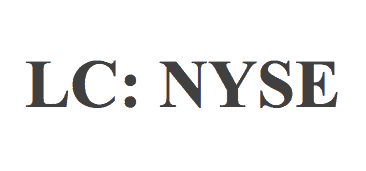As far as the peer-to-peer or marketplace lending industry is concerned, 2014 ended with a bang and not a whimper as Lending Club, the leading online lender, completed its initial public offering. On December 10, 2014 the Lending Club offering went effective, and ultimately sold 66.7 million shares, raising $834 million at an almost $9 billion valuation for the company, with 7.7 million of those shares sold by insiders, and the remainder being newly issued by the company. The shares sold at $15 and went on to reach a high of almost $28 before closing at $23.01 last Friday (NYSE:LC).
Because Lending Club was the proverbial canary in the coalmine, and the first to attempt gain SEC approval, this offering is a true bellwether for the industry. Indeed, the aptly named OnDeck Capital Inc ., another lending platform, quickly followed suit with its own IPO on December 16, 2014. LendingClub has basically paved the way for other lending platforms and we should look for many others to follow. In addition, the IPO process legitimizes the industry as a whole, confirming that it can withstand the scrutiny of the SEC (and others involved in the process such as investment banks, accountants, attorneys, brokers and analysts).
One of the things I like to do when a company goes public is to compare the initial registration statement it filed with the SEC to the registration statement that was ultimately deemed effective by the SEC. This allows one to infer comments and concerns raised by the SEC and others. It is also helpful to review the SEC comment letters and responses, which are released 20 days following the effectiveness of the registration statement. In this case the initial S-1 registration statement was filed on May 29, 2014 and the amended S-1 went effective on December 16.
Some of the pertinent changes made were as follows:
1) Updating volumes – this change was due merely to the fact that the S-1 was originally filed in May and needed to have updated stats and financials by the time it went effective. However it showcases the dramatic growth rate of the industry. As an example, Lending Club facilitated the origination of $1.2 billion of loans in just the third quarter of 2014, as compared to a total of $6 billion in its entire 7-year history. From 2012 to 2013, its originations increased 188%, and for the nine months ended September 30th from 2013 to 2014 originations increased 117%.
2) Amended term “platform” to “marketplace” – initially, Lending Club dubbed their service a “platform,” which was revised to a “marketplace.” This is one of the major changes in the peer-to-peer industry, as it has matured and redubbed itself. Ron Suber should be proud.
3) Borrower demand vs. investor demand – one thing that stands out is that while both investor demand and borrower demand continue to grow, the rate of borrower demand significantly outstrips the growth of investor demand. For 2011, 2012 and 2013, borrower demand increased104%, 125% and 151%, respectively, while investor demand increased only 32%, 37% and 44%, respectively. Of course what really matters is the borrower acceptance rate and if the appropriate interest rate is applied to the risk, but this reminds me of an adage paraphrased from Warren Buffet that if you are willing to lend to borrowers at a lower interest rate than anyone else, those borrowers will find you, even if you are in a rowboat in the middle of the ocean.
4) Augmented the risk relating to the reliance on a small number of investors – Lending Club was required to augment their risk factor relating its reliance on a small number of investors and make it clear that a relatively small number of investors account for a large dollar amount of investment in loans funded through their marketplace. Lending Club mitigated this risk by stating they feel there is sufficient investor demand to replace such investors.
5) Public v. private offerings – this was not a true change from filing to filing, but the update due to the passage of time really highlighted the changing profile of the marketplace lending investor. Whereas in 2012, 73.6% of investors were investing as individuals through the public note program, by the third quarter of 2014, only 24.9% of investors were investing through the public note program, and the remaining 75.1% was institutional investors investing through the private channels. This transformation lends credit to the term peer-to-peer becoming a misnomer and the re-characterization of the industry. At this rate, the private institutional market will quickly swallow the individual lender base.
6) Clarification of different investment products – in addition to the public note program, LendingClub offers private trust interests and whole loans to institutional investors. As discussed above currently 75% of investments are made through these channels. Language clarifying and describing these channels was added.
 7) Addition of risk relating to third party sites and “clickthroughs” – the SEC required the addition of a risk relating to the statements made by third party sites that refer investors to the Lending Club site. The concern is that those sites may make statements that Lending Club cannot police which are misleading. While Lending Club may not bear ultimate liability for those statements, investors or borrowers could pursue litigation, which would be costly and time consuming.
7) Addition of risk relating to third party sites and “clickthroughs” – the SEC required the addition of a risk relating to the statements made by third party sites that refer investors to the Lending Club site. The concern is that those sites may make statements that Lending Club cannot police which are misleading. While Lending Club may not bear ultimate liability for those statements, investors or borrowers could pursue litigation, which would be costly and time consuming.
8) Addition of rules to list of regulations creating risk – in the risk factor addressing all of the regulations that Lending Club is subject to, the company added Section 5 of the Federal Trade Commission Act which addresses unfair and deceptive acts and practices in commerce and Section 1031 of the Dodd-Frank Act. It is not clear whether this was merely an oversight, LendingClub had previously taken the position that these regulations were not applicable to its operations or if there was a change in interpretation of the regulations.
9) Subject to the regulation of the Consumer Financial protection Bureau – similarly, the first submission did not contain language that Lending Club was subject to oversight by the CFPB, which was subsequently added.
 10) 2% of investors are non-US investors – one interesting point was clarified in that, although 2% of Lending Club investors are non-US citizens, the company does not undertake to comply with the securities law of those countries. To me this seems like an unnecessary risk for such a small amount of business. I would probably either vet the laws of the home countries of such investors or simply not accept that foreign capital, rather than potentially subjecting the company to foreign lawsuit and/or sanction.
10) 2% of investors are non-US investors – one interesting point was clarified in that, although 2% of Lending Club investors are non-US citizens, the company does not undertake to comply with the securities law of those countries. To me this seems like an unnecessary risk for such a small amount of business. I would probably either vet the laws of the home countries of such investors or simply not accept that foreign capital, rather than potentially subjecting the company to foreign lawsuit and/or sanction.
Ultimately, these are very few changes, especially considering this is a new industry and neither Lending Club nor the SEC had a lot of precedent to work with. This is a big moment for the industry, not only has this model passed muster with the borrowing and investing customers of marketplace lending but with the broader capital markets community of investment banks, accountants, lawyers, analysts and investors and multiple regulatory agencies as well. My 2015 projection is a year of continued growth and additional public offerings of other marketplace lending platforms.
 Georgia P. Quinn is a senior associate in Seyfarth Shaw LLP’s Corporate department. Ms. Quinn has led Seyfarth’s Crowdfunding Initiative, helping clients stay at the forefront of the enacted and proposed SEC regulations. Ms. Quinn has recently spoken to the Securities and Exchange and Commission, Congressional staff-members, leaders of UK crowdfunding portals and the Small Business Administration Roundtable; chaired a panel on crowdfunding for the ABA; presented to the Canadian Equity Crowdfunding Alliance, the Council of Development Finance Agencies, the Crowdfund Global Expo in San Diego and New York, the New York State Bar Association, at the New York State Securities Bar and in a websem for American Banker. Ms. Quinn is the subject matter expert behind Disclosure Dragon, the first semi-automated disclosure document generating software that helps prepare a PPM, Form C or Form 1-A at a fraction of the traditional time and cost. All views and comments above are strictly her own views and do not reflect the opinion or position of Seyfarth Shaw.
Georgia P. Quinn is a senior associate in Seyfarth Shaw LLP’s Corporate department. Ms. Quinn has led Seyfarth’s Crowdfunding Initiative, helping clients stay at the forefront of the enacted and proposed SEC regulations. Ms. Quinn has recently spoken to the Securities and Exchange and Commission, Congressional staff-members, leaders of UK crowdfunding portals and the Small Business Administration Roundtable; chaired a panel on crowdfunding for the ABA; presented to the Canadian Equity Crowdfunding Alliance, the Council of Development Finance Agencies, the Crowdfund Global Expo in San Diego and New York, the New York State Bar Association, at the New York State Securities Bar and in a websem for American Banker. Ms. Quinn is the subject matter expert behind Disclosure Dragon, the first semi-automated disclosure document generating software that helps prepare a PPM, Form C or Form 1-A at a fraction of the traditional time and cost. All views and comments above are strictly her own views and do not reflect the opinion or position of Seyfarth Shaw.


